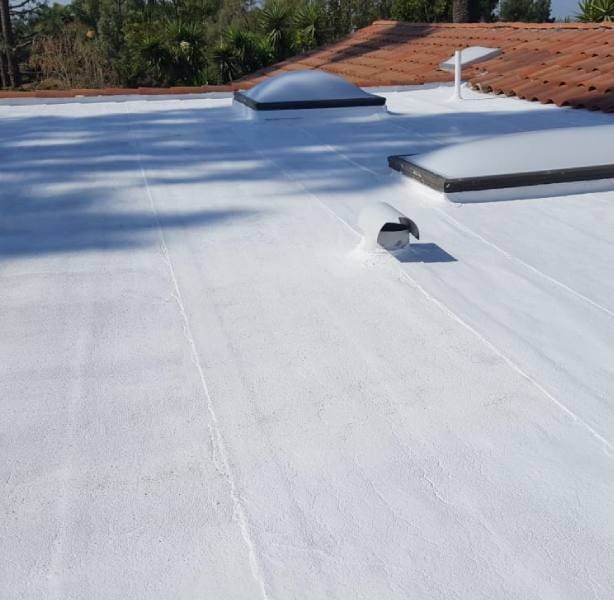What Is The 25% Rule For Roofing?
When it comes to roofing, many homeowners and business owners find themselves overwhelmed by the myriad of rules, regulations, and jargon that accompany such a significant investment. One crucial guideline that often surfaces in discussions about roofing is the "25% rule." So what exactly is this rule? And why is it essential for your roofing project? In this article, we’ll dive deep into the 25% rule for roofing, exploring its implications, applications, and how it can affect both residential and commercial properties.
What Is The 25% Rule For Roofing?
The 25% rule for roofing essentially states that if you need to replace more than 25% of your roof's surface area due to damage or wear and tear, it's generally advisable to replace the entire roof rather than just patching up the affected sections. This rule aims to ensure structural integrity and longevity of the roof itself. Why is this important? Well, if you're only replacing a quarter of your roof while leaving the rest in place—especially if it's old—you could create an imbalance that leads to further problems down the road.
Understanding the Necessity of the 25% Rule
Structural Integrity: A roof's ability to withstand weather conditions relies heavily on its uniformity. If only part of it is replaced, you may inadvertently weaken the structure.
Cost Efficiency: While replacing a full roof may seem like a larger upfront cost, patching could lead to repeated repairs which may end up costing more in the long run.

Aesthetic Consistency: Different ages and styles of materials can lead to mismatched aesthetics—something that isn’t just visually unappealing but can also reduce property value.
Warranty Issues: Many warranties stipulate that any significant repairs must involve full replacement to qualify for coverage.
How Does This Rule Apply in Real Life?
Imagine you've got a commercial building with an aging flat roof. A storm has caused substantial damage to one quadrant of that roof—say about 30%. According to the 25% rule, you'd be better off investing in a complete new roofing system rather than attempting repairs on just that section. Not only does this safeguard against future leaks or structural issues, but it also keeps your building looking cohesive.
The Importance of Hiring a Commercial Roofing Company
So you’ve decided it’s time for a new roof or major repairs—what’s next? Enter the commercial roofing company!
Why Choose Professionals Over DIY Solutions?
-
Expert Knowledge: Professional contractors understand local codes and regulations better than anyone else.
-
Quality Materials: A reputable company will use high-quality materials suited specifically for your building type.
-
Safety First: Working at heights poses risks; professionals are trained in safety protocols.
-
Long-Term Value: A professionally installed roof is less likely to have issues before its time; thus saving you money in potential repairs.
Finding a Reliable Commercial Roofing Company
When searching for a commercial roofing company, consider these tips:
Types of Roofing Systems Covered by the 25% Rule
Understanding different types of roofs is crucial when considering how the 25% rule applies.
Flat Roofs
Flat roofs are common in commercial settings due to their practicality and ease of installation. However, Atlas Roofing WA they often require more frequent maintenance due to water pooling.
Pitched Roofs
These roofs have angles that allow water runoff effectively reducing pooling but may require more complex installations.
Metal Roofs
Metal roofs offer durability and longevity but can be costly upfront. Understanding when they're eligible for full replacement under the 25% rule is vital.
Factors Influencing Your Decision Under The 25% Rule
Several factors come into play when deciding whether or not to follow through with full replacement based on this rule.
Age of Existing Roof Material
Older materials may not hold up as well against new layers; thus making full replacement advantageous.


Extent of Damage
If significant damage exceeds 25%, then following through with complete replacement becomes necessary for maintaining integrity.
Benefits of Following The 25% Rule
Sticking closely to this guideline isn't just about compliance; it's about maximizing your investment.
FAQs About The 25% Rule For Roofing
What happens if I ignore the 25% rule? Ignoring this guideline can lead to larger structural issues over time and potentially void warranties.
Is there ever an exception to this rule? Yes! Each situation is unique; sometimes minor repairs suffice depending on circumstances.
Can residential properties also benefit from this rule? Absolutely! Homeowners should apply similar logic when assessing their roofs.
What types of roofs are most affected by this rule? Flat roofs often see significant benefits from understanding these guidelines due to maintenance needs!
How can I tell if my roof needs replacing instead of repair? Signs include sagging areas, extensive leaks, or age nearing typical lifespan benchmarks (15-20 years).
Will my insurance cover total replacement under this rule? Often yes! But checking specific policy details beforehand is always wise!
Conclusion: Making Informed Decisions About Your Roof
Understanding what the 25% rule for roofing entails empowers both homeowners and business owners alike! By adhering closely to these guidelines while hiring trustworthy professionals—a commercial roofing company—you set yourself up not just for immediate success but long-term peace-of-mind regarding your investment as well!
When faced with decisions about repairing or replacing parts of your roof, always keep these principles close at hand—they could save you headaches (and dollars) down the line!
In summary, whether you're dealing with minor repairs or considering extensive renovations dictated by industry standards like our discussed 25% guideline, remember that informed choices pave the way toward durable solutions! So go ahead—evaluate those shingles carefully!